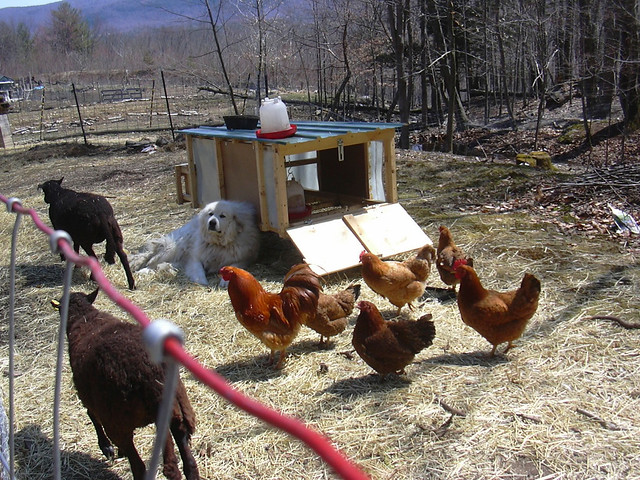















Kerry Furnell wrote:
Sorry for the long reply, but I hope I've managed to give you some ideas - you've certainly given me some!
My project thread
Agriculture collects solar energy two-dimensionally; but silviculture collects it three dimensionally.




Devon Olsen wrote:have you considered maybe inducing meander into the stream that feeds the pond
My project thread
Agriculture collects solar energy two-dimensionally; but silviculture collects it three dimensionally.




My project thread
Agriculture collects solar energy two-dimensionally; but silviculture collects it three dimensionally.









 2
2




My project thread
Agriculture collects solar energy two-dimensionally; but silviculture collects it three dimensionally.
 1
1




My project thread
Agriculture collects solar energy two-dimensionally; but silviculture collects it three dimensionally.








Devon Olsen wrote:...perhaps just capturing a few thousand more gallons of water in the streams catchment area could result in the soil having more water to give over the course of the year, and PERHAPS it would solve your two weeks of dry creekbed with even just a small trickle to help you out...
My project thread
Agriculture collects solar energy two-dimensionally; but silviculture collects it three dimensionally.
 1
1




My project thread
Agriculture collects solar energy two-dimensionally; but silviculture collects it three dimensionally.




 1
1





My project thread
Agriculture collects solar energy two-dimensionally; but silviculture collects it three dimensionally.




 1
1




My project thread
Agriculture collects solar energy two-dimensionally; but silviculture collects it three dimensionally.
 1
1




"Turn your face to the sun and the shadows fall behind you." ~Maori Proverb
www.permi-eden.com
 1
1




My project thread
Agriculture collects solar energy two-dimensionally; but silviculture collects it three dimensionally.
 1
1




 2
2





My project thread
Agriculture collects solar energy two-dimensionally; but silviculture collects it three dimensionally.




Cj Verde wrote:Chickens are the bane of my existence right now. I'd kill 'em all except that I love those eggs! Half of them are contained but the other half are free ranging all over despite having clipped the wings on one-side. It's impossible to plant in the garden - or anywhere for that matter!
 1
1




"Turn your face to the sun and the shadows fall behind you." ~Maori Proverb
www.permi-eden.com
 4
4




My project thread
Agriculture collects solar energy two-dimensionally; but silviculture collects it three dimensionally.
 1
1




 ? I've been dealing with similar tendencies here but so far they are content to leave my plantings alone when they do get out. It seems I have more incidents of escape when I get lazy about giving them something to do. Right after a paddock shift (once a week) they are happy to explore and get the choicest morsels. After a day or so the troublemakers will start looking for forage and nesting spots in the forest edge around my yard. Tossing them a wheelbarrow of leaves to rake or several saplings/branches to pick over helps a lot.
? I've been dealing with similar tendencies here but so far they are content to leave my plantings alone when they do get out. It seems I have more incidents of escape when I get lazy about giving them something to do. Right after a paddock shift (once a week) they are happy to explore and get the choicest morsels. After a day or so the troublemakers will start looking for forage and nesting spots in the forest edge around my yard. Tossing them a wheelbarrow of leaves to rake or several saplings/branches to pick over helps a lot.
 1
1




My project thread
Agriculture collects solar energy two-dimensionally; but silviculture collects it three dimensionally.








My project thread
Agriculture collects solar energy two-dimensionally; but silviculture collects it three dimensionally.
 3
3






My project thread
Agriculture collects solar energy two-dimensionally; but silviculture collects it three dimensionally.










 3
3




My project thread
Agriculture collects solar energy two-dimensionally; but silviculture collects it three dimensionally.
 2
2




My project thread
Agriculture collects solar energy two-dimensionally; but silviculture collects it three dimensionally.
 1
1




My project thread
Agriculture collects solar energy two-dimensionally; but silviculture collects it three dimensionally.




Subtropical desert (Köppen: BWh)
Elevation: 1090 ft Annual rainfall: 7"
 1
1




My project thread
Agriculture collects solar energy two-dimensionally; but silviculture collects it three dimensionally.
 1
1





My project thread
Agriculture collects solar energy two-dimensionally; but silviculture collects it three dimensionally.















My project thread
Agriculture collects solar energy two-dimensionally; but silviculture collects it three dimensionally.




My project thread
Agriculture collects solar energy two-dimensionally; but silviculture collects it three dimensionally.









|
This tiny ad's name is Bob. With just one "o".
The new gardening playing cards kickstarter is now live!
https://www.kickstarter.com/projects/paulwheaton/garden-cards
|








